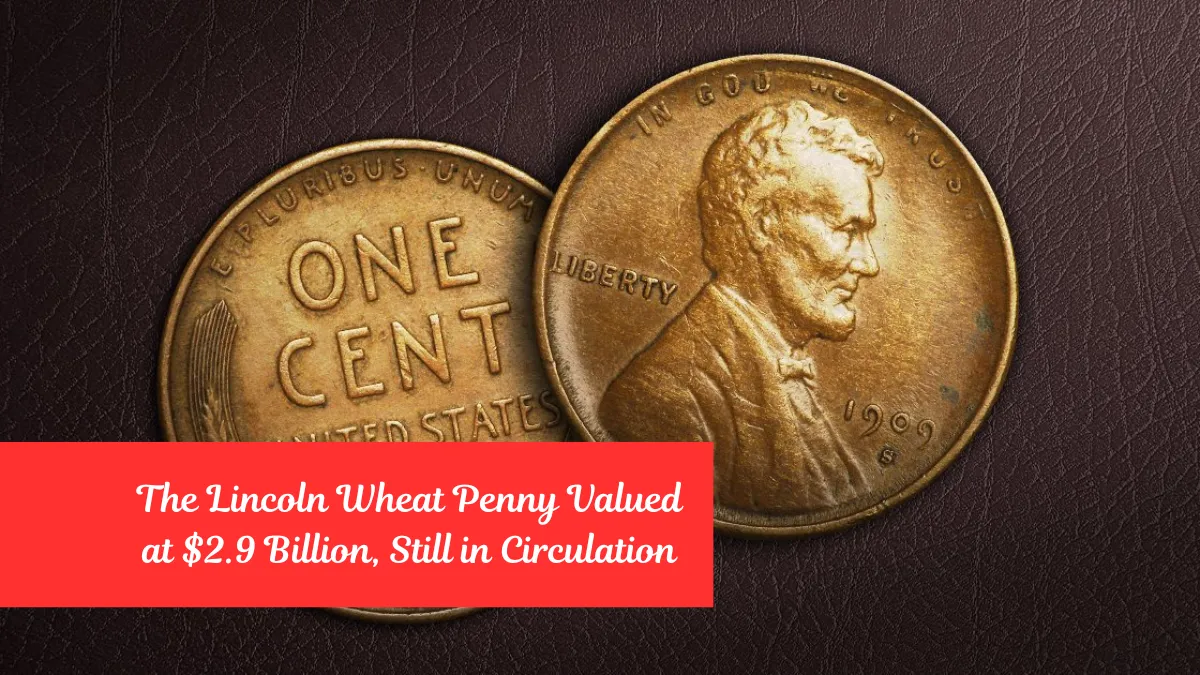The world of coin collecting is full of surprises, but perhaps none as jaw-dropping as the claim that a Lincoln Wheat Penny is worth an astonishing $2.9 billion—and may still be in circulation. Is it true, or just another viral myth? Let’s explore the mystery, facts, and the truth behind this fascinating coin tale.
What Is the Lincoln Wheat Penny?
The Lincoln Wheat Penny, minted from 1909 to 1958, is a classic piece of American coinage. Designed by Victor David Brenner, it features the iconic portrait of Abraham Lincoln on the front and wheat stalks on the reverse. It’s a coin many Americans have seen, handled, or saved, often without realizing its potential value—especially in rare editions.
The Origin of the $2.9 Billion Rumor
The staggering $2.9 billion figure attached to a Lincoln Wheat Penny likely originated from exaggerated social media posts, satirical content, or misunderstood coin appraisal reports. While it’s fun to imagine a single penny being worth more than the GDP of a small nation, there is currently no verified evidence that any Lincoln Wheat Penny has ever been valued—or sold—for that amount.
Coin experts and collectors agree: while some Wheat Pennies are indeed rare and valuable, none approach even a fraction of a billion dollars.
The Most Valuable Lincoln Wheat Pennies (Realistic Examples)
Though $2.9 billion is a myth, several Lincoln Wheat Pennies have fetched impressive prices due to minting errors, rarity, and historical significance:
- 1943 Bronze Penny: This coin is perhaps the most famous error in U.S. coinage history. During World War II, pennies were supposed to be made of steel to save copper for war production. However, a few bronze blanks were mistakenly used. Only a handful exist, and these have sold for over a million dollars at auction.
- 1909-S VDB Penny: This was the first year of the Lincoln cent, and those with the “S” mintmark (for San Francisco) and designer initials “VDB” on the reverse are very rare. Minted in limited numbers, this coin can fetch thousands—even hundreds of thousands—in pristine condition.
- 1955 Double Die Penny: A minting mistake caused the date and lettering to appear doubled. The visual effect is dramatic and has made this coin one of the most desirable error pennies in the hobby.
Could a Billion-Dollar Penny Really Be in Circulation?
In short—no. While it’s true that rare coins can sometimes be found in pocket change, the odds of stumbling upon one valued at even a million dollars are incredibly slim, let alone $2.9 billion. Most rare coins are discovered by experienced collectors or through inherited collections.
However, it is still possible to find valuable Wheat Pennies in circulation. Many people overlook older coins, especially if they’re not in mint condition, but collectors know to check dates, mintmarks, and any odd errors.
Why People Are Drawn to the Myth
The idea of a billion-dollar coin captures the imagination. Everyone wants to believe in a real-life treasure hunt—where a simple penny in your piggy bank might change your life forever. These stories often spread fast on social media because they offer a blend of hope, mystery, and nostalgia.
But it’s important to balance that excitement with fact. Coin values are based on real market demand, condition, rarity, and historical context—not viral headlines.
Final Thoughts
While no Lincoln Wheat Penny is worth $2.9 billion, the coin remains a beloved and potentially valuable piece of American history. Whether you’re a casual collector or someone curious about what’s in your pocket change, it’s worth taking a closer look at your coins.
Who knows? While you may not find a billion-dollar penny, you might just discover a hidden gem worth hundreds or even thousands. And that’s still a pretty incredible find.

